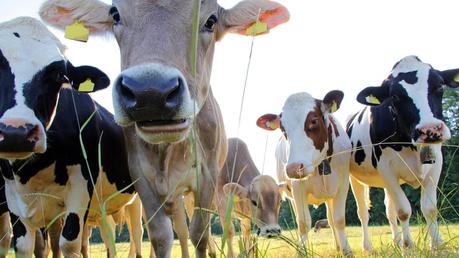
We all know fine wine gets better with age, but what about your favourite steak?
Could the meat on your dinner plate not only get tastier, but be more sustainably and ethically raised if it came from retired dairy cows at the end of a long, productive life?
Most beef for our dinner plates are young heifers (females that have not yet calved) and steers who are 15 to 30 months old.
A recent feature in the Los Angeles Times, however, explores the taste sensation, and the environmental rationale, for using older beef, especially older dairy cows. Once they stop producing milk, the cows are given a few years of happy grass-feeding in cow retirement before winding up on a dinner plate. Notes the article:
LA Times: Rich, intense steaks from older, 'mature' cowsThe numbers don't lie: A multipurpose cow can provide more than 80,000 pounds of food in its lifetime in the form of milk, cheese, butter and beef, as opposed to just 600 pounds of meat from a beef cow.
The article notes that in the US for nearly the last century, the meat industry has operated as a single-purpose model in which cattle are raised either for beef or dairy, not both. This process, however, has created industrial models of production that cause environmental and sustainability issues. And frankly, it is not so great for the cow's experience of life, either.
The article describes how a few high-end restaurants in the US are working with special butchers, such as Mindful Meats in Marin County California, to recreate a Spanish beef tradition called vaca vieja (literally old cow). Mindful Meats has a mission to repurpose retired organic dairy cows and create a viable market for their beef.
Coming from older animals, the meat is definitely tougher, aficionados say. However, when cooked in specific ways - such as braised, sous-vide, or as air-dried and salt cured such as for bresaola - it is said to have a rich, intense, flavour totally unlike young beef.
When you have an animal that's 5 or 6 years old, it has that deep yellow fat.... It makes for bresaola with a butteriness and a depth of flavor that you just can't get out of younger animals.
Four years ago, The Guardian newspaper in the UK wrote a similar article about this high-end trend of serving Spanish vaca vieja, also called Galician meat. The meat, some of which comes from cows as old as 17, was "flying off the shelves into the mouths of celebrities."
The Guardian: Raising the steaks; meet the elderly Spanish cows destined for dinner platesThe LA Times article notes that up until the last century all farmers would raise cows this way, quoting one of the producers:
In this country, eating older, dual-purpose animals seems like a 'new' thing, but it's historically what humans do. It's the way of the past, but I truly believe it's also the way of the future.

